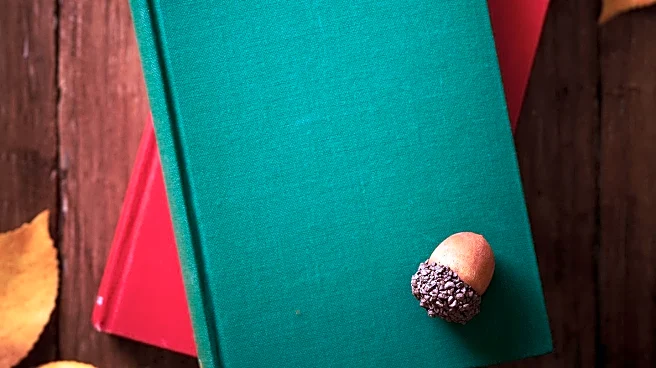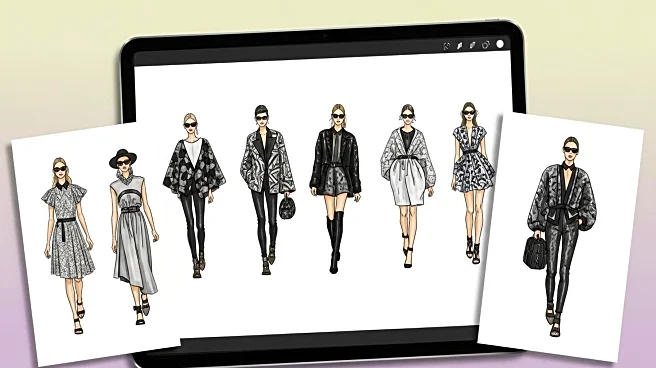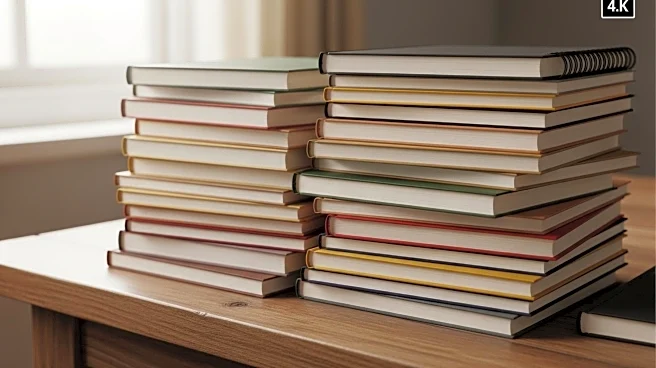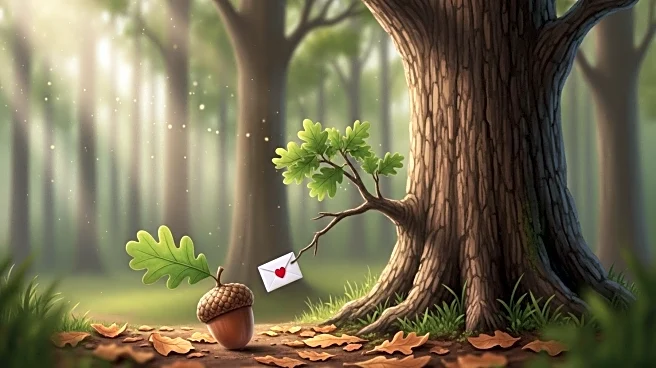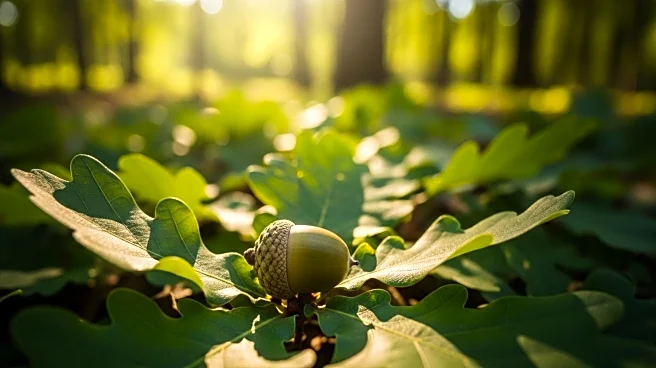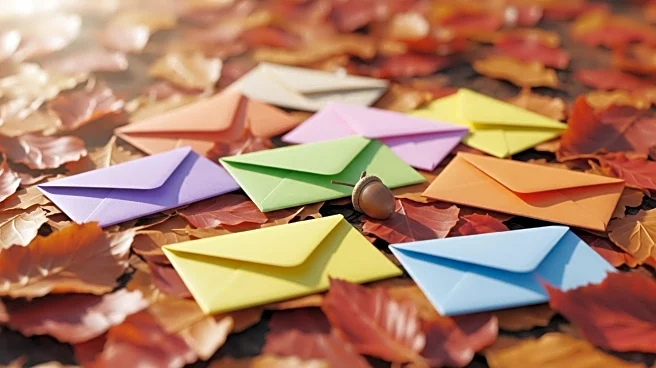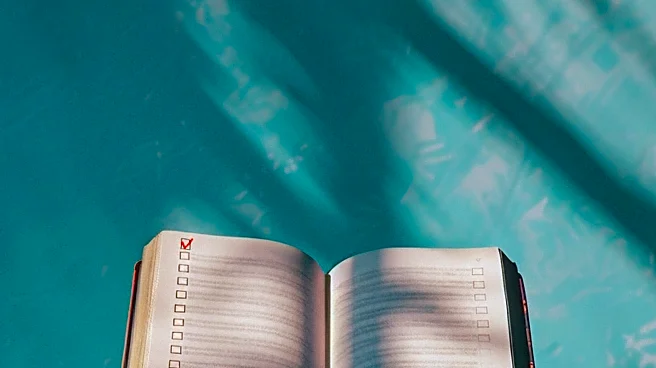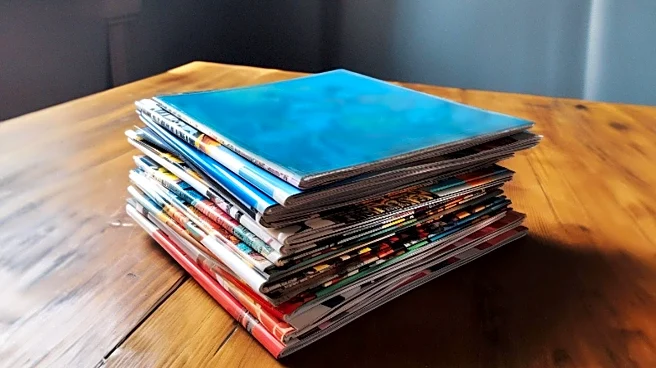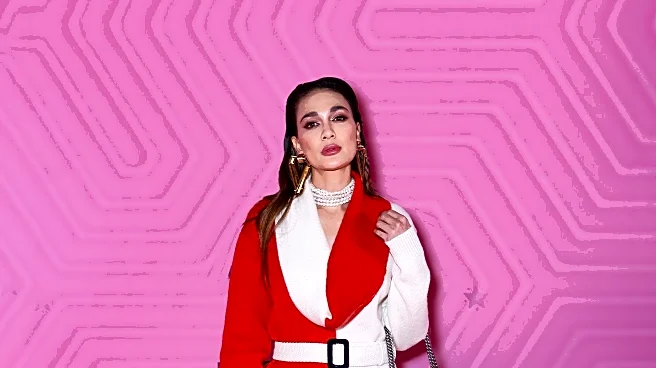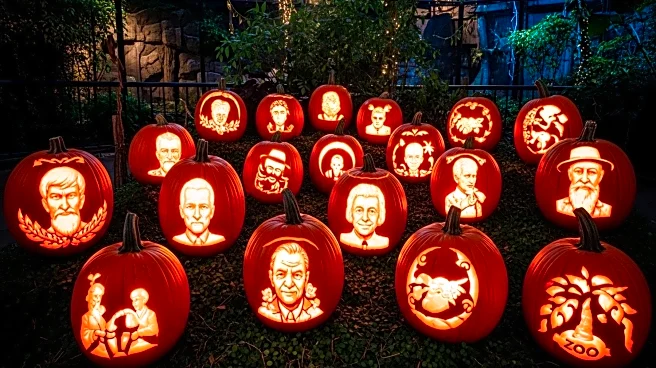What is the story about?
What's Happening?
Joyce Sidman's new children's book, 'Dear Acorn, (Love, Oak)', presents a collection of letter poems that explore the connections between various entities, such as an oak tree and an acorn, a pebble and a river, and a button and a coat. The book aims to illustrate how small things are integral to larger entities and vice versa. The idea for the book originated from Sidman's reflection on the potential of an acorn to grow into a mighty oak tree. The illustrations, created by Melissa Sweet, utilize hand-painted watercolor paper and collage materials, adding a unique visual dimension to the poems.
Why It's Important?
The book 'Dear Acorn, (Love, Oak)' offers a creative approach to teaching children about relationships and interconnectedness in nature and everyday life. By using letter poems, Sidman encourages young readers to appreciate the significance of small things and their roles in larger systems. The book's artistic illustrations further enhance its appeal, making it a valuable educational tool that fosters creativity and imagination in children. It also highlights the importance of poetry as a medium for expression and connection.
What's Next?
Following the release of 'Dear Acorn, (Love, Oak)', educators and parents may incorporate the book into learning activities that focus on nature, poetry, and art. The book's themes could inspire classroom discussions and projects that explore environmental science and creative writing. Additionally, the success of this book may lead to further collaborations between Sidman and Sweet, potentially resulting in more works that blend poetry with visual art.
Beyond the Headlines
The book's emphasis on the relationship between small and large entities reflects broader ecological and philosophical themes. It encourages readers to consider their own roles within larger systems, promoting a sense of responsibility and stewardship towards the environment. The creative process behind the illustrations also highlights the value of artistic experimentation and the use of unconventional materials in art.
AI Generated Content
Do you find this article useful?
